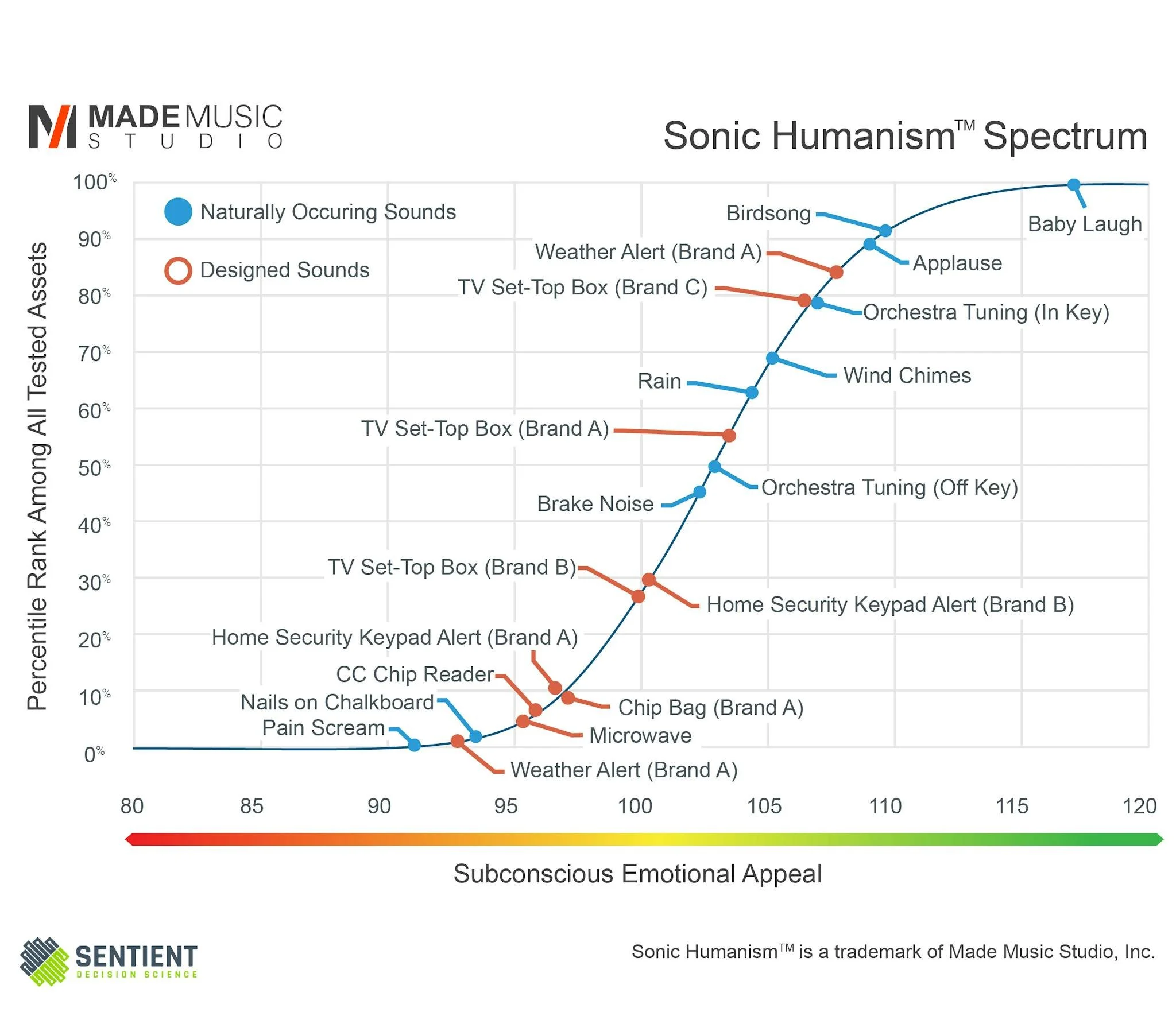Engage Your Senses: 3 Ways to Define Your Sonic Identity
by Chandler Lane, Senior Account Executive
Want to bring your brand to life through sonic branding, but are finding it challenging to articulate how you want your brand sound…to sound? Well, you are in great company.
For many of our clients, describing what they want out of a sonic identity can be challenging. We get it: sometimes musical descriptors can sometimes feel like mere words on a page. But I’d like to reassure you that there’s no need to be a musical expert to create your brand’s signature sound. You already know your brand inside and out, and that is the most valuable insight you can provide.
In my time on the Made Music Studio Client Success team, I’ve worked with clients that were able to adequately define their sonic identity in ways they didn’t know they could before — often in ways we haven’t even thought about! How? We like to start with a few methods, including inviting them to Contextualize, Personify, and Visualize their sonic branding.
Contextualize
Sonic branding is powerful when it can mentally transport you to an entirely different place. In the context of sonic branding, we tend to put a lot of focus on music as emotional and behavioral triggers: “I hear this and feel XYZ” or “I hear this and it reminds me of brand XYZ”. Tapping into what environment your brand’s sound takes you to is going one step further.
Try this: close your eyes and thinking about your brand and all that it entails – your brand’s purpose, audience, and values. Now ask yourself: Where are you? What do you see, smell, or taste?
When working with sound, it helps to start by engaging all of the senses. Whether your brand transports you to a fond memory or a fictitious setting, it is important to know what world your brand’s sound lives — or can live. We’ve worked with our clients to create multisensory experiences for consumers through sonic branding. Through the Totino’s Pizza Rolls sonic identity, audiences are transported to Area 425, a world inspired by retro video games. Through the Nature Valley whistle and crunch, audiences are immersed in the joy of the great outdoors.
Through this approach, there’s an exciting opportunity to go beyond the brand marketing world and create experiences that engage all five senses, both for you and your audience.
Personify
When working with our clients and partners on sonic branding solutions, we’ve found that the most valuable place to start is with what’s familiar. “Putting a face to the name” is the perfect analogy in this case. It is easier to recall something when you have an easily accessible mental image of it, and music is no exception.
We often ask our clients to Personify the sound of their brand. Sometimes we ask: if your brand was a famous actor who would it be? What about a musical artist? A historical figure? If creating a sonic identity is an extension of your brand personality, it helps to have some, well, personalities to reference.
Maybe you want to capture your brand’s humor (like Chris Rock), or boldness (like Lady Gaga). Connecting your brand to a person or character during a brainstorm can offer a new lens to view your brand in the creative process.
You already know who your brand is. Personification helps close the gap between that and how your product or service shows up in the marketplace.
Visualize
Another way to think about your brand’s sound is to Visualize it as an object. This object can be still, in motion, or possibly interacting with another object — this provides a point of reference for the feeling you’d like to create. “Like nails on a chalkboard,” “crashing like thunder,” “quiet as a mouse.”
Along the lines of personification, this method removes bias when discussing nuances of music such as instrumentation. Yes, we all may have a slightly different idea of what a basketball bounce sounds like, but we all have a similar idea of what a basketball is, and have a subconscious emotional association with the sound of one bouncing.
In our SonicPulse research with Sentient Decision Science, we’ve even ranked such sounds for emotional appeal. On our Sonic Humanism Spectrum, those nails on a chalkboard score high in the “distressing” range, with baby laughter ranking highest for appeal.
We can apply this same learning to sonic branding. This kind of exercise is fun because it opens opportunities to explore a deeper meaning, values, and feelings associated with your brand (i.e., why does your brand sound like Object A over Object B?). These insights allow us to read between the lines of what your brand wants, and ultimately needs, for an iconic, enduring, and effective brand sound.
In other words: you may not know what chord progression you’re hearing, but you’ll know if it sounds as delicate as a feather or as sharp as a siren.
If you’re new to sonic branding, these shortcuts can help you immensely. It might be scary to explore these avenues, but it will undoubtably uncover a new depth to your brand that you may not have ever known was there.


